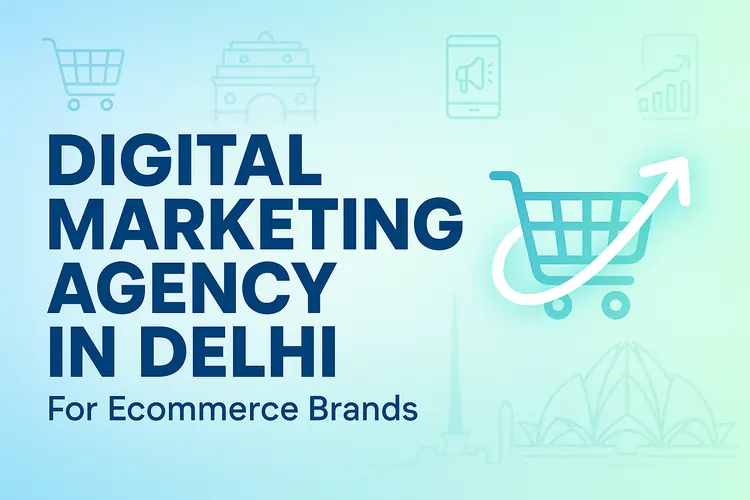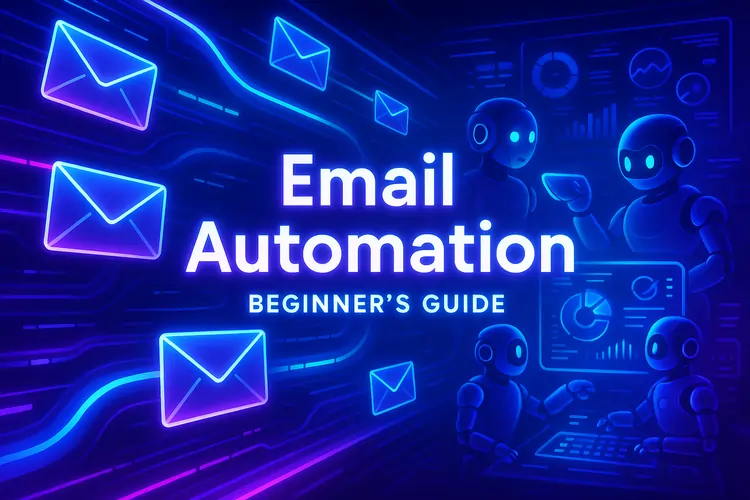Creating a digital marketing strategy from scratch can feel overwhelming. But with the right steps, it’s achievable — and profitable.
At The DM School, we recently helped a local coaching brand triple their leads in 60 days using the same framework you’re about to learn.
🔥 Pro Tip: A winning strategy starts with clarity — know exactly who you want to reach before picking platforms or setting budgets.
This isn’t theory. It’s a tested process we use to align goals, audience, and channels for maximum ROI.

Step 1: Define Your Goals
Every successful digital marketing strategy starts with clear goals. Without them, your campaigns drift without direction.
Decide exactly what you want to achieve — more leads, higher sales, stronger brand awareness, or all three. Your goals will guide every decision you make, from platform selection to ad creatives.
📊 Case in Point: A startup we worked with set a clear goal of 1,000 qualified leads in 90 days. By aligning campaigns to this number, we achieved 1,380 leads with a CPL 28% lower than industry average.
Quick Goal-Setting Framework (SMART)
- Specific: Define exactly what you want (e.g., “500 new sign-ups”).
- Measurable: Ensure progress can be tracked with numbers.
- Achievable: Set targets that are realistic with your resources.
- Relevant: Align goals with your business growth priorities.
- Time-bound: Add deadlines to create urgency and focus.
Step 2: Know Your Audience
A digital marketing strategy only works when it speaks directly to the right people. Guessing your audience wastes time and money.
Identify who your ideal customer is, what they want, and where they spend time online. This shapes your messaging, platforms, and ad creatives.
🎯 Case in Point: We ran identical Facebook ads for two audience segments. One delivered a CPL of ₹68, the other ₹212 — proving the cost of targeting the wrong people.
Audience Research Checklist
- Define demographics: age, gender, location, income level.
- Identify interests and online behavior patterns.
- Understand pain points and buying triggers.
- Study competitors’ targeting to find gaps.
- Create detailed buyer personas for precision marketing.
Step 3: Choose the Right Channels
Even the best digital marketing strategy fails if you choose the wrong channels. You need to focus your time and budget where your audience is active and responsive.
Each platform plays a different role in the customer journey. Facebook Ads excel at creating demand and retargeting warm audiences. Google Ads capture people actively searching for your solution. Instagram builds brand recall through visuals, while LinkedIn is ideal for high-value B2B lead generation.
💡 Case in Point: A real estate client split their ad budget evenly between Google and Facebook. After tracking results for 30 days, we shifted 70% of spend to Google Ads based on CPL performance. The result — a 41% lower CPL and 63% more qualified leads.
Picking channels is not just about popularity — it’s about matching your business goals to each platform’s strengths. For example, if you’re launching a product, a mix of Facebook and Instagram for awareness, paired with Google Search Ads for high-intent buyers, can cover both demand generation and demand capture.
We’ve seen campaigns fail simply because brands tried to be everywhere at once. Spreading thin on 6–7 platforms drains budget and attention. Starting with 2–3 core channels allows you to optimize faster, collect usable data, and scale without guesswork.
Channel Selection Framework
- Audience fit: Match platform demographics with your buyer personas from audience research.
- Objective alignment: Pick channels that best deliver your primary goal — leads, sales, or awareness.
- Budget efficiency: Start lean and increase investment where ROI is proven.
- Test & measure: Run small controlled experiments to find the top performer.
- Integrate: Combine channels for remarketing and funnel progression — e.g., run Google + Facebook retargeting for higher conversion rates.
The smartest brands treat channel selection as a living process — test, measure, refine, and adapt. The right mix today may change in 6 months as algorithms evolve and audience habits shift.
Step 4: Craft Your Messaging
Your messaging is the voice of your digital marketing strategy. It determines how your audience perceives your brand and whether they take action.
Consistent, benefit-driven messaging builds trust and moves people through the sales funnel. Whether it’s Facebook Ads, email sequences, or landing page copy, your words must speak to your audience’s needs, not just your product features.
📝 Case in Point: We rewrote a client’s ad copy to focus on “Save 3 Hours Daily” instead of “Our Tool Has Automation Features.” CTR jumped from 1.2% to 3.9% in 14 days.
Great messaging starts with understanding your audience pain points. Instead of listing product specs, show how your solution improves their life or business. This shift from features to benefits can make your campaigns instantly more persuasive.
Messaging Framework for Conversions
- Hook: Start with a problem or bold statement that grabs attention.
- Agitate: Highlight the pain of not solving the problem.
- Solve: Present your offer as the clear solution.
- Proof: Use testimonials, case studies, or data to back claims.
- Call to Action: Tell them exactly what to do next.
For a deeper dive into persuasive copywriting, check our guide on how Facebook Ads work — the same principles apply across channels.
Step 5: Set Your Budget
A digital marketing strategy without a budget is like sailing without a compass — you drift until your resources run out.
Your budget determines the reach, speed, and scale of your campaigns. It also helps prevent overspending on platforms that don’t deliver results. The smartest brands allocate funds based on goals, audience size, and platform efficiency.
📊 Case in Point: One of our e-commerce clients spent 80% of their budget on Instagram and only 20% on Google Search. After tracking ROI, we reversed the split — revenue jumped 52% in 45 days.
Budget Allocation Formula
We recommend starting with a 70-20-10 model for new campaigns:
- 70% – Core channel with proven ROI (e.g., Google Ads for high-intent searches).
- 20% – Secondary channel for audience expansion (e.g., Facebook Ads for retargeting).
- 10% – Experimental channels or new ad formats to test potential.
Adjust these percentages monthly based on performance data from your ad process. This keeps your budget agile and responsive to market changes.
Pro Tips for Smarter Budgeting
- Set daily caps to avoid runaway spending.
- Use platform-specific attribution tools to measure ROI accurately.
- Invest more in high-converting audiences before expanding reach.
- Reserve 5–10% for seasonal or event-based campaigns.
Step 6: Create a Content Plan
Without a content plan, your digital marketing strategy becomes reactive instead of proactive. A structured plan ensures your brand consistently shows up in front of the right audience.
A good content plan covers what to post, when to post, and where to post it. It should balance long-term SEO pieces like SEO blogs with short-term engagement content such as social media posts, email newsletters, and ad creatives.
📅 Case in Point: For a coaching client, we implemented a 90-day content calendar mixing blog posts, YouTube videos, and Facebook Ads. Website traffic rose 143%, and lead volume doubled in 3 months.
Content Planning Framework
- Define core themes: Choose 3–5 recurring topics tied to your brand positioning.
- Map content to buyer journey: Awareness (blogs/videos), consideration (case studies/guides), decision (offers/testimonials).
- Set frequency: Example — 2 blogs, 3 social posts, and 1 email per week.
- Repurpose content: Turn a blog into a carousel post, email, and ad creative.
- Measure & adjust: Use analytics to refine topics and posting times.
For a ready-to-use resource, download our free Content Calendar Template. It’s the same format we use at The DM School for clients in industries from education to e-commerce.
If you’re new to content marketing, our content marketing services can help you plan, create, and publish high-ROI content consistently.
Step 6: Create a Content Plan
Without a content plan, your digital marketing strategy becomes reactive instead of proactive. A structured plan ensures your brand consistently shows up in front of the right audience.
A good content plan covers what to post, when to post, and where to post it. It should balance long-term SEO pieces like SEO blogs with short-term engagement content such as social media posts, email newsletters, and ad creatives.
📅 Case in Point: For a coaching client, we implemented a 90-day content calendar mixing blog posts, YouTube videos, and Facebook Ads. Website traffic rose 143%, and lead volume doubled in 3 months.
Content Planning Framework (With What, How, Where)
- Define core themes
What: 3–5 recurring topics aligned with your brand positioning.
How: Brainstorm content pillars based on audience pain points and SEO keywords.
Where: Use tools like Google Keyword Planner and customer surveys. - Map content to buyer journey
What: Create content for awareness, consideration, and decision stages.
How: Plan a mix of blogs, case studies, and testimonials.
Where: Publish on your blog, social media, and email campaigns. - Set frequency
What: Decide how often each content type will be posted.
How: Use a content calendar to schedule posts in advance.
Where: Plan weekly for short-form content, monthly for long-form pieces. - Repurpose content
What: Convert one piece into multiple formats.
How: Turn a blog into a carousel post, short video, and newsletter.
Where: Share on Instagram, LinkedIn, YouTube Shorts, and your mailing list. - Measure & adjust
What: Track engagement, conversions, and ROI for each content type.
How: Use analytics tools and A/B testing.
Where: Monitor via Google Analytics, Facebook Insights, and email platform reports.
For a ready-to-use resource, download our free Content Calendar Template. It’s the same format we use at The DM School for clients in industries from education to e-commerce.
If you’re new to content marketing, our content marketing services can help you plan, create, and publish high-ROI content consistently.
Sample 1-Week Content Calendar (Scan & Deploy)
How to use: Duplicate this block, swap topics per your themes, and align with the buyer journey. Keep it to 2–3 core channels until ROI is proven.
Step 7: Implement, Track & Optimize
A digital marketing strategy only works when you execute fast and measure tight. Speed plus data beats long debates.
Launch with clear KPIs, short feedback loops, and weekly optimization. Use our ad process to test, scale, and cut without emotion.
📈 Case in Point: We reduced CPL by 37% in 21 days by pausing 3 under-performing ad sets and shifting budget to a high-intent search campaign. Full breakdown in our Google Ads case study.
The 3×3 Optimization Loop
- What: Review 3 core metrics per channel – CTR, CPL/CPA, ROAS.
- How: Run 3 weekly actions – scale winners, fix maybes, kill losers.
- Where: Use GA4 + ad platforms; log changes in a simple sheet.
Increase budget 20–30% on ad sets with CPL < target and stable CPA.
Test new hooks, creatives, or bids for ad sets within 15% of target CPL.
Pause anything 25%+ above target after 2–3 learning cycles.
KPI Cheat Sheet (fast math)
- CTR = Clicks ÷ Impressions.
- CPL = Spend ÷ Leads.
- CPA = Spend ÷ Purchases.
- ROAS = Revenue ÷ Spend.
Improve inputs first. Sharper messaging from proof-based creatives lifts CTR, which lowers CPL, which unlocks scale.
When in doubt, audit your path: keyword → ad → landing page. Fix friction, align promise to page, and retest. Need a model page? Review our YouTube Ads results breakdown and adapt the flow.
Step 8: Build Your Funnel & Landing Pages
A digital marketing strategy without a funnel is like pouring water into a bucket with holes. You lose prospects at every step without a guided path to conversion.
Your funnel should lead visitors from awareness to action with zero friction. That means using focused landing pages, strong CTAs, and consistent messaging. Avoid sending paid traffic to your homepage — send them to targeted service pages or dedicated campaign funnels.
🚀 Case in Point: We moved a client from generic website traffic to a 3-step funnel — ad → targeted landing page → thank-you upsell page. Result: lead-to-sale conversion jumped from 4.2% to 11.8% in 45 days.
Basic Funnel Flow (Micro Wireframe)
Facebook Ads, Google Ads, Email Campaigns
Benefit-led headline, proof elements, single CTA
Next-step offer, cross-sell, or booking link
Funnel-Building Checklist
- Match ad promise to landing page headline.
- Use proof-based elements — testimonials, stats, certifications.
- Limit navigation to keep focus on the CTA.
- Use mobile-first layouts — 60–70% of traffic is mobile.
- Track every step with analytics for drop-off points.
For a deep dive into funnel creation, see our Ad Process Guide — it shows exactly how we build and optimize funnels for clients across industries.
Step 9: Monitor Competitors & Market Trends
A digital marketing strategy isn’t built in isolation. The market shifts fast, and competitors adapt even faster. If you’re not tracking what others are doing, you risk falling behind.
Competitor monitoring isn’t about copying — it’s about spotting opportunities, identifying gaps, and leveraging trends before they saturate. This is how we’ve helped clients in competitive niches win market share without always outspending rivals.
Competitor Snapshot Table
| Competitor | Strength | Weakness | Opportunity for You |
|---|---|---|---|
| Competitor A | Strong brand recall, high ad spend | Weak organic SEO presence | Double down on content marketing to capture long-tail traffic |
| Competitor B | Great social engagement | Low conversion rate on landing pages | Outperform with optimized funnels & CTAs |
| Competitor C | High search rankings | Minimal video content | Leverage proof-driven YouTube Ads to tap into visual search demand |
💡 Pro Tip: Use tools like SEMrush, Ahrefs, and Google Alerts to track competitors’ new content, backlinks, and keyword movements. Combine this with social listening to catch viral trends early.
For a deeper analysis, explore our full ad process guide — it shows how competitor tracking integrates into campaign planning.
Step 10: Measure & Optimize Your Strategy
Even the most detailed digital marketing strategy is worthless if you’re not tracking its performance. Measurement turns assumptions into data, and data into better decisions.
The goal isn’t just to collect numbers — it’s to understand what’s working, fix what’s not, and scale what’s driving ROI. This is where businesses either stagnate or surge ahead.
Performance Metrics Dashboard
📈 Website Traffic
Track sessions, page views, and bounce rate in Google Analytics to see if your content is attracting and retaining visitors.
💰 Conversion Rate
Measure form fills, purchases, or lead submissions. Even a 1% lift can mean a massive revenue jump.
📊 Ad ROI
Compare ad spend to revenue from campaigns. Use data to cut wasted budget and boost high-performing ads.
📢 Engagement
Monitor likes, shares, comments, and watch time to ensure your content is resonating with your audience.
💡 Pro Tip: Set up a monthly review meeting. Use tools like Google Data Studio or Looker to create a live dashboard combining analytics, ad data, and sales metrics for real-time optimization.
Need help building a measurement system? Our digital marketing experts at The DM School specialize in creating custom dashboards that track the KPIs that actually matter.
Conclusion — Your Strategy Is Only as Strong as Its Execution
Building a digital marketing strategy from scratch isn’t just about planning — it’s about consistent execution, measurement, and optimization. Every brand can create a document. Only the brands that act, test, and refine end up dominating their market.
Remember: the best strategy is a living document. It evolves as your audience, market trends, and digital platforms change. The faster you adapt, the stronger your competitive edge becomes.
🔥 Quick Takeaway: Strategy without action is just a wish list. Execute daily, track results weekly, and optimize monthly.
Ready to Build a Strategy That Actually Works?
At The DM School, we don’t just design strategies — we execute them. From targeted ads to conversion-focused funnels, our team ensures your digital marketing doesn’t just look good on paper but drives measurable growth.


